A half-wave rectifier with a capacitor-input filter is shown in Below Figure. The filter is simply a capacitor connected from the rectifier output to ground. RL represents the equivalent resistance of a load. We will use the half-wave rectifier to illustrate the basic principle and then expand the concept to full-wave rectification.
During the positive first quarter-cycle of the input, the diode is forward-biased, allowing the capacitor to charge to within 0.7 V of the input peak, as illustrated in Figure (a). When the input begins to decrease below its peak, as shown in part (b), the capacitor retains its charge and the diode becomes reverse-biased because the cathode is more positive than the anode. During the remaining part of the cycle, the capacitor can discharge only through the load resistance at a rate determined by the RLC time constant, which is normally long compared to the period of the input. The larger the time constant, the less the capacitor will discharge. During the first quarter of the next cycle, as illustrated in part (c), the diode will again become forward-biased when the input voltage exceeds the capacitor voltage by approximately 0.7 V.
(a) Initial charging of the capacitor (diode is forward-biased) happens only once when power is turned on.
(b) The capacitor discharges through RL after peak of positive alternation when the diode is reverse-biased. This discharging occurs during the portion of the input voltage indicated by the solid dark blue curve.
(c) The capacitor charges back to peak of input when the diode becomes forward-biased. This charging occurs during the portion of the input voltage indicated by the solid dark blue curve.
Fig : Operation of a half-wave rectifier with a capacitor-input filter. The current indicates charging or discharging of the capacitor.
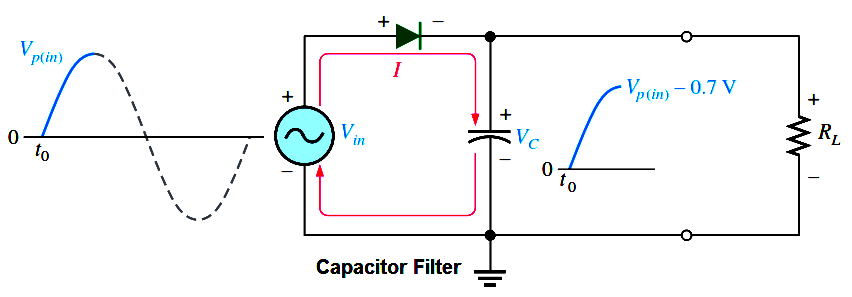


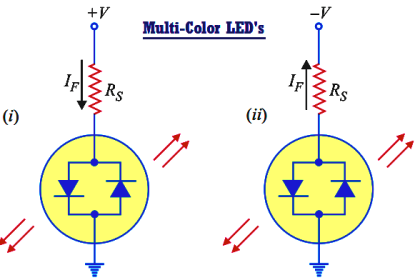
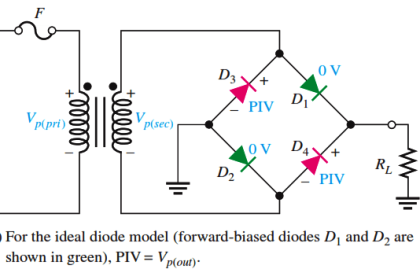
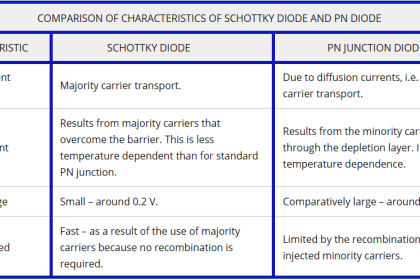
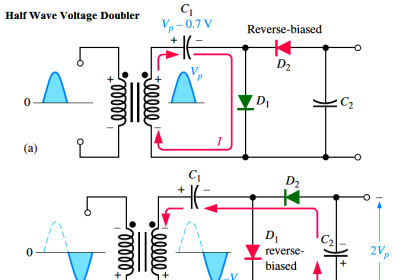
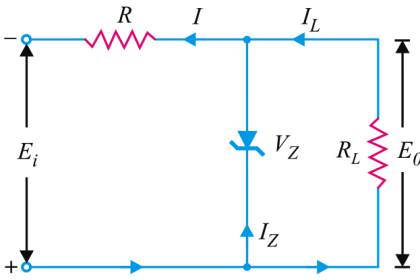
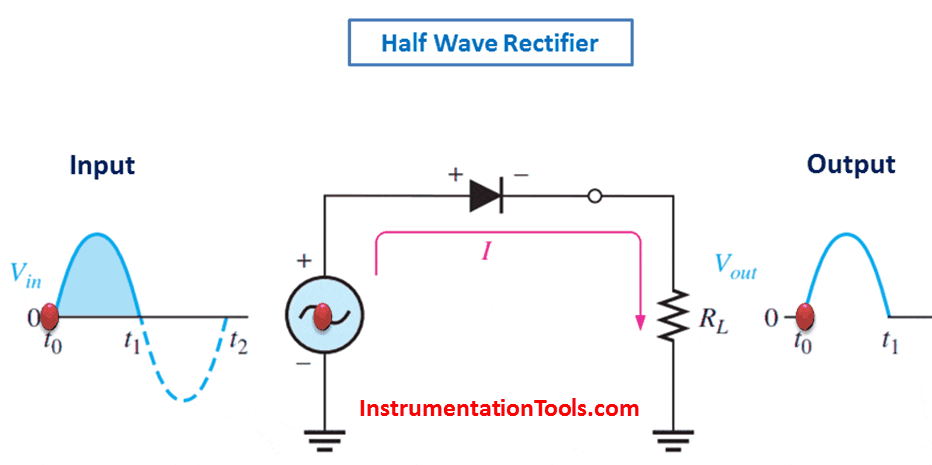

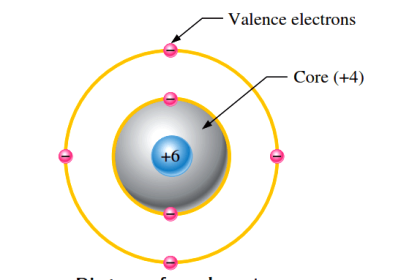

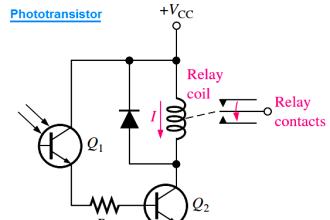
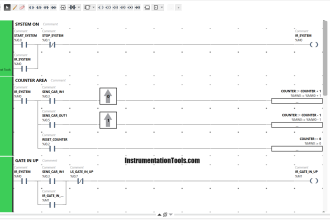
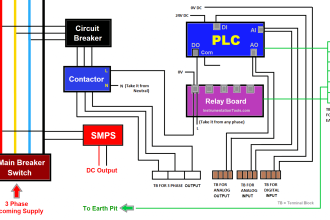
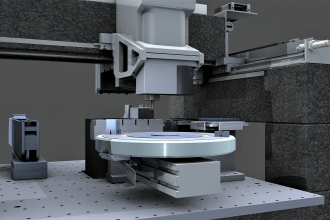
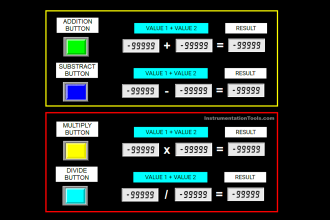
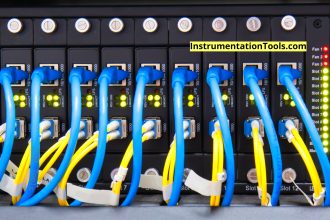
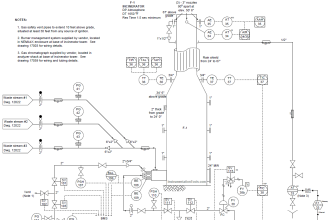

useful